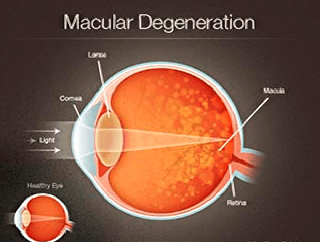Source: University Of Sydney May 13, 2019 5 years, 11 months, 1 week, 6 days, 23 hours, 27 minutes ago
Scientists have found significant differences in the shape and biology of the same type of cell taken from different parts of the retina, according to a study in eLife. The results could help explain why the macula region of the eye is more susceptible to disease than the peripheral retina and reveals a protective mechanism that may be disrupted in disease.

The macula is a specialised region within the retina that can be severely affected by diseases of the eye, such as age-related macular degeneration and diabetic retinopathy. This study looked at Müller cells, the major glial cells of the retina which are present in both the macula and peripheral retina and play important roles in nerve-cell function, metabolism and activating light receptors in the eye. Recent reports suggest that Müller cells are the major production site for two essential amino acids -- serine and glycine.
"The importance of Müller cells for normal retinal function suggests that their dysfunction contributes to many eye diseases, such as diabetic retinopathy and macular telangiectasia," explains co-first author Ting Zhang, Research Fellow at the Save Sight Institute, University of Sydney, Australia. "But whether the function of Müller cells differs in the macula and the peripheral retina was previously unknown. We set out to investigate the features of Müller cells from these two locations, with a particular focus on their production of serine and glycine."
The team started by isolating Müller cells from eye tissue provided by healthy donors and growing them in the lab to study the cells' features. They found that Müller cells from the macula were small and spindle or star-shaped, while those from the peripheral retina were much larger and had multiple processes.
Genetic analysis of the cells revealed 7,588 genes that had different levels of expression between the two cell types. Moreover, activity of key genes related to serine production, such as the enzyme phosphoglycerate dehydrogenase (PHGDH), was higher in the macular Müller cells than in those from the peripheral retina. "This finding is particularly important because a recent study reported that the serine metabolic pathway may play an important role in macular telangiectasia through defects in PHGDH," says co-first author Ling Zhu, also a Research Fellow at the Save Sight Institute, University of Sydney.
To study how different levels of PHGDH affect serine production, the team used radioactively labelled serine to trace its metabolism in the isolated Müller cells. Serine was converted into glycine at a higher rate in Müller cells from the macula than those from the peripheral retina, although the reverse reaction happened at a lower rate. Macula Müller cells also metabolised certain other molecules differently compared with Müller cells from the peripheral retina.
Finally, they tested the effect of blocking the PHGDH enzyme on the Müller cells' ability to withstand stress. They found much higher levels of cell toxicity in the Müller cells from the macula than in those isolated from the peripheral retina when PHGDH was blocked. Further investigation suggested this could be due to depletion of the protective molecule glutathione alongside a higher level of toxic reactive oxygen species in the macular Müller cells.
<
;br />
"We have found distinct differences between two populations of Müller cells which explain the unique metabolic functions of the human macula," concludes senior author Mark Gillies, Professor of Clinical Ophthalmology and Eye Health at the University of Sydney. "The differences in serine production from the two regions of the eye are consistent with the idea that macular telangiectasia is a disease of macula Müller cells. A better understanding of the unique biology of these cells could help to prevent and treat sight loss in future."
Reference:Ting Zhang, Ling Zhu, Michele Catherine Madigan, Wei Liu, Weiyong Shen, Svetlana Cherepanoff, Fanfan Zhou, Shaoxue Zeng, Jianhai Du, Mark Cedric Gillies. Human macular Müller cells rely more on serine biosynthesis to combat oxidative stress than those from the periphery. eLife, 2019; 8 DOI: 10.7554/eLife.43598
